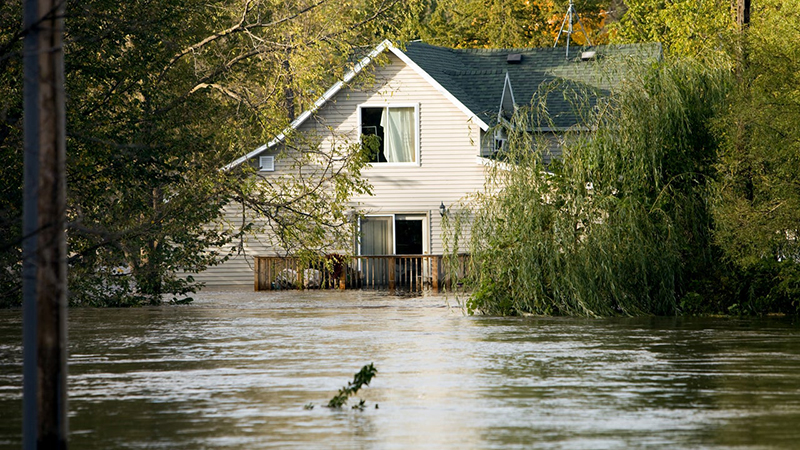Factors that determine flood insurance cost
The average U.S. homeowner may pay around $888 per year for a flood insurance policy, but as with other forms of insurance, your premium will vary based on your individual rating factors. While the best way to know how much your flood insurance will cost is to get a quote, understanding the factors that determine your premium might help you to control your premium as much as possible.
If you have a mortgage or other type of home loan, your lender will require you to buy a flood insurance policy if your home is in a Special Flood Hazard Area (SFHA), Coastal Barrier Resources System (CBRS) or Otherwise Protected Area (OPA). Flood policies are generally required to be paid in full, either by you directly or out of your mortgage’s escrow account.
Flood risk
The first and perhaps most significant factor that determines the cost of flood insurance is the historical risk of flooding in your region. While every home has a level of flood risk, only those in moderate- to high-risk areas typically require flood insurance. However, there are some exceptions to this rule. For instance, Florida homeowners insured with state-backed Citizens must carry flood insurance, regardless of their flood zone.
Even if you are in a low-risk flood zone, you still have a small risk of flooding. One in three flood insurance claims are in low- to moderate-risk areas, according to FEMA. Since flood insurance is based on risk, the more likely flooding is in your area, the more your flood insurance is likely to cost. To find how much of a risk flooding is in your area, check out FEMA’s flood maps for your region.
Where your home is specifically located within a floodplain also plays a role in the cost of flood coverage. Your home may be located within a floodplain, but your flood insurance could be lower if your house is built on a hill or other elevation. This is because the elevation reduces the risk of flood damage, thus reducing the risk that an insurance company will have to pay out a claim.
Home age and construction
Flood insurance providers also pay close attention to how your home is constructed and how old it is. Older homes built before modern construction materials and techniques may be more vulnerable to damage caused by flooding and could incur additional expenses — such as custom lumber milling — to repair. Some modern building techniques may help mitigate flood damage, like including floor openings for water to drain out more quickly.
Type of coverage
There are only two coverage options on a flood insurance policy: building coverage and contents coverage. Choosing a policy with no contents coverage will likely be cheaper than choosing a policy that includes both coverage types, but could leave you financially vulnerable if a flood destroys your home and everything in it.
Coverage limit and deductible level
Generally, the more coverage you purchase, the higher your premium will be. The higher your coverage, the greater the risk to the insurance company, which is taking on greater risk with higher coverage levels. Your deductible, which is the amount of money you will pay out of pocket if you file a claim, also impacts your premium. Typically, the higher your deductible, the lower your premium will be. With a higher deductible, you are taking on a higher amount of financial responsibility in the event of claim, thus reducing the financial burden of the insurance provider.
Type of policy
Depending on your home’s location, you may qualify for a National Flood Insurance Program (NFIP) Preferred Risk Policy (PRP). If your home is located in a low-risk flood area, you may be able to purchase valuable PRP flood insurance coverage at a lower price. Standard policies are often the only option for homes located in moderate- and high-risk flood areas.
Insurance company
Historically, flood insurance was only offered by the National Flood Insurance Program (NFIP). Although various insurance companies were able to facilitate the purchase of NFIP policies, the rates were standardized regardless of what company you purchased coverage from. However, within the last several years, private insurance companies have begun to sell and underwrite their own policies. Now, with more companies selling flood insurance, you can get several flood insurance quotes to compare coverage types and premiums, just like you can with homeowners insurance quotes.

